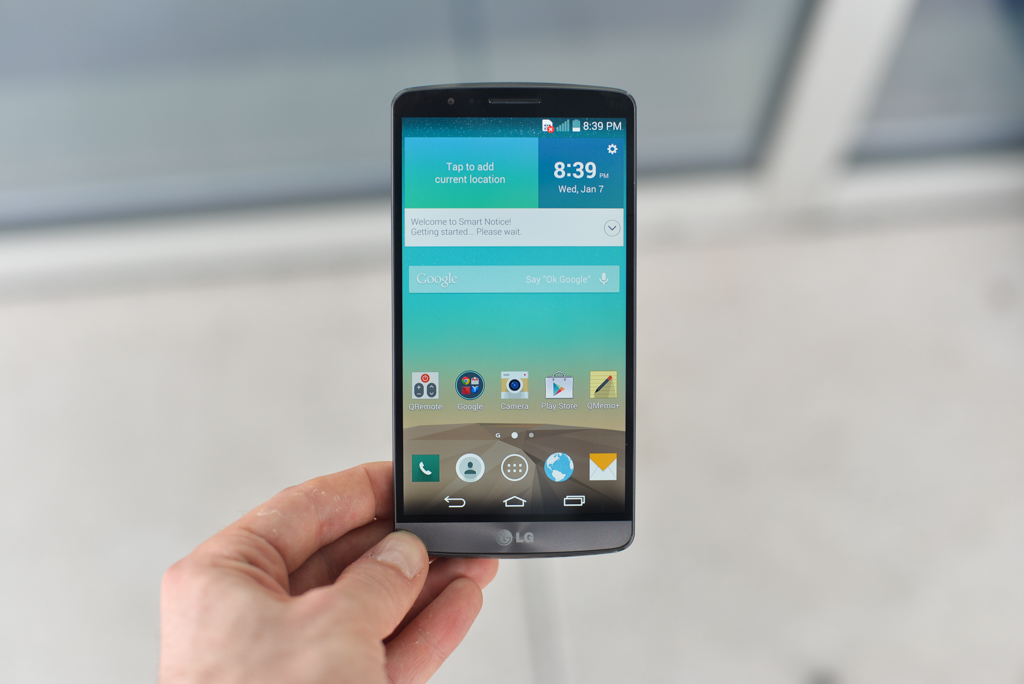
The LG G3 is real, and it is very impressive. The device was announced today simultaneously in New York City, London and Seoul, and while specific Canadian availability is not yet available, it will almost certainly come to multiple carriers in the country.
The 5.5-inch device bears a close resemblance to its predecessor, but it’s sleeker, and feels immediately better in the hand. The Quad HD screen, which boasts a (currently) industry-leading resolution of 2560×1440, is ridiculous — sharp and vivid, but indeed ridiculous — takes up the vast majority of the front panel, while the rear panel, slightly modified from the G2, feels better in the hand.
Specs
- Android 4.4.2 KitKat
- 5.5-inch 2560×1440 pixel Quad HD IPS display
- Qualcomm Snapdragon 801 SoC @ 2.5Ghz
- 3GB RAM / 32GB internal storage (microSD slot)
- 13MP rear camera with OIS+, autofocus laser
- 2.1MP front-facing camera
- 146.3 x 74.6 x 8.9mm
- 149 grams
- 3000mAh
- Metallic Black, Silk White, Shine Gold, MoonViolet, Burgundy Red colours
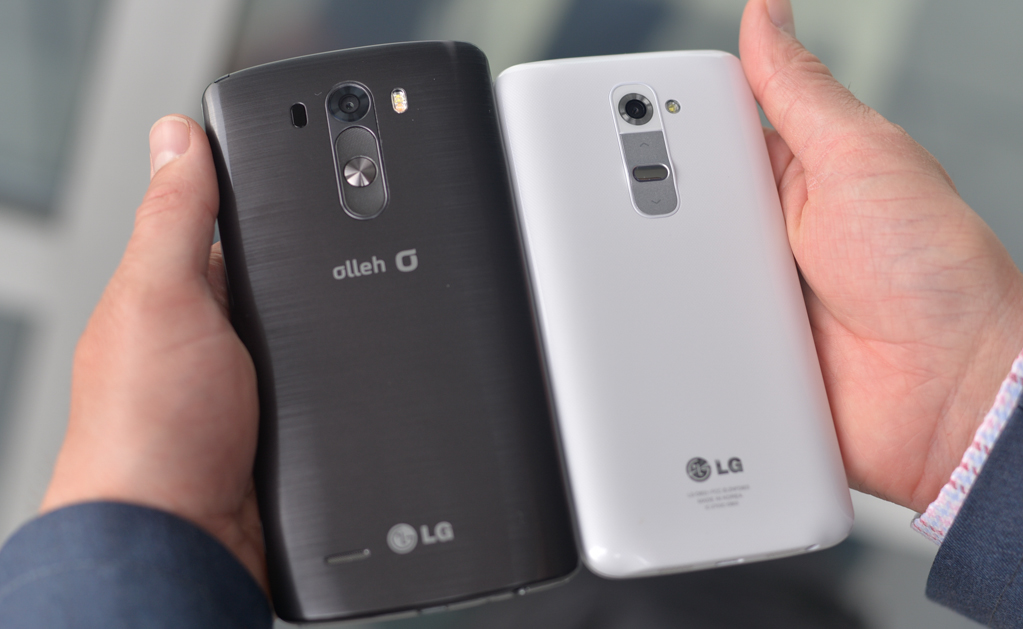
Core Improvements
The G3 is the culmination of my decree from earlier in the year that 2014 is the year of subtle improvements. While it looks remarkably similar to its predecessor, the faster processor, removable battery, sharper screen, expandable storage, far more attractive user interface and improved build materials culminate in a vastly better smartphone.
Though the device is large, it’s not that much bigger than the G2, which is an incredible achievement considering its screen is 0.3″ larger.
We got to play around with the Metallic Black and Silk White variants of the device, and came away impressed with overall feeling, especially the back, which is now removable. It’s less slippery than before, and while it’s not close to the premium aluminum of the HTC One M8, I’d take the smooth matte curves of the G3 over the Galaxy S5’s dimpled plastic backing any day.
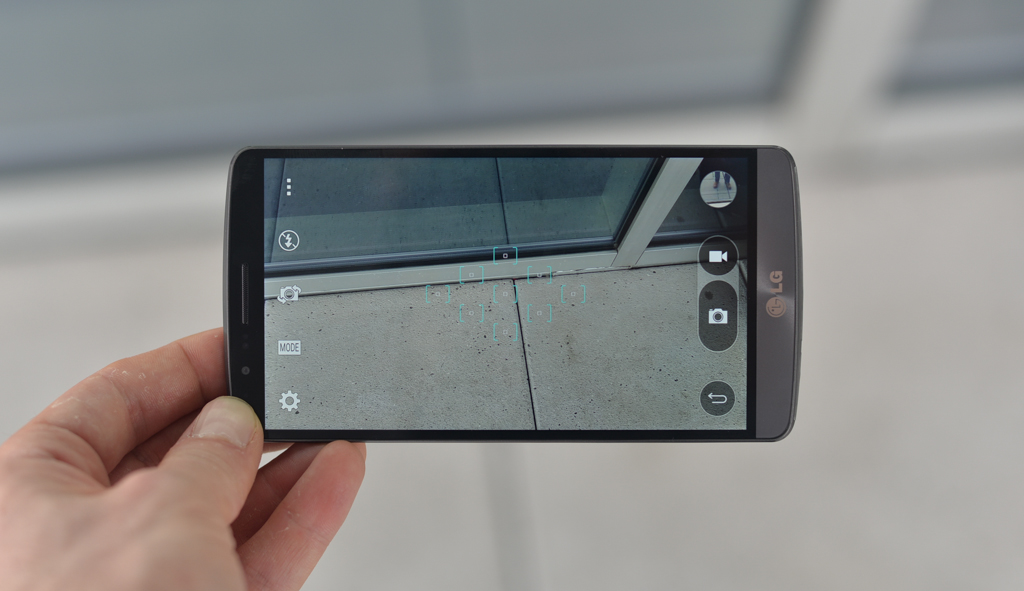
The camera, which we only got to test briefly, has been overhauled, both in speed and operation. The UI, similarly flat with the rest of the KitKat-based software, now lets you focus and take a shot with one tap. A low-power laser, similar to that of a speed-detecting radar gun, is used in conjunction with the ISP improvements inside the Snpadragon 801, to keep autofocus speeds under 275ms, some 25ms faster than the Galaxy S5.
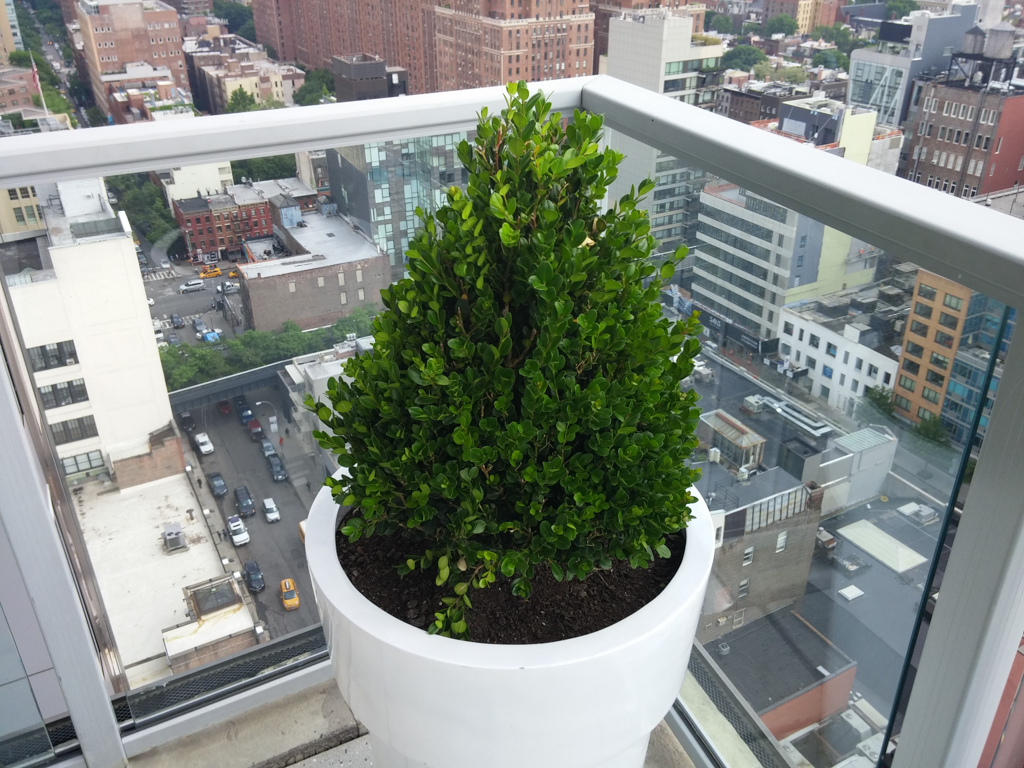
LG G3
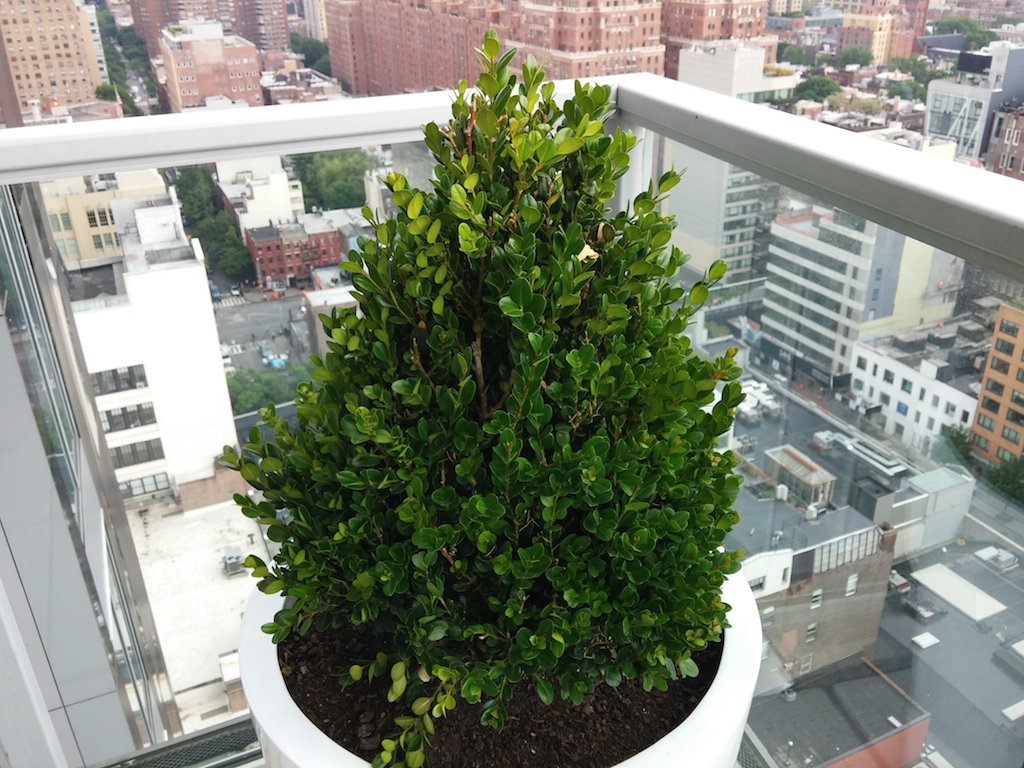
LG G2
At first glance, outdoor photo quality, while not overwhelmingly different, is quite a bit better than the G2.
What is vastly better than the G2 is the look and feel of the KitKat-based user interface. We’ll go further in depth in the coming weeks, but at first glance this is clearly LG at its most restrained. Finally adopting Google’s visual guidelines, the virtual menu button has been replaced with a multitasking button. The notification shade no longer overwhelms the whole screen, either.
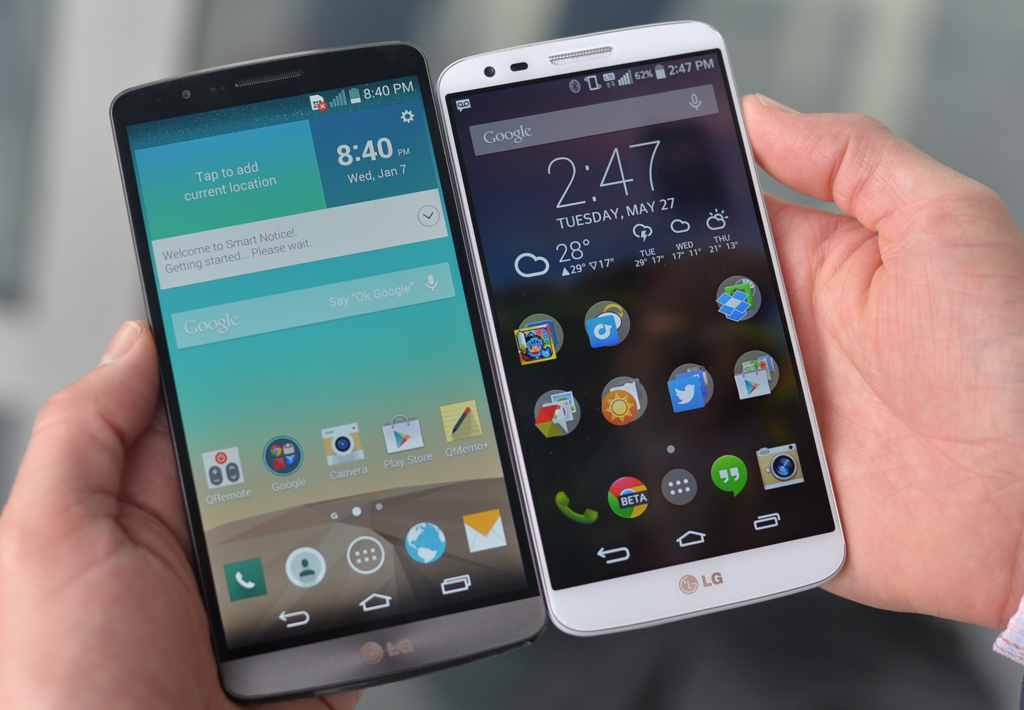
The UI, aside from being flatter and adorned with a “mature” colour palette — specifically, the software feels much more modern, and no longer a reject from TouchWIZ circa 2011 — there are subtle animations and a host of other touches, like LG’s first-party apps matching UI colour with the notification shade.
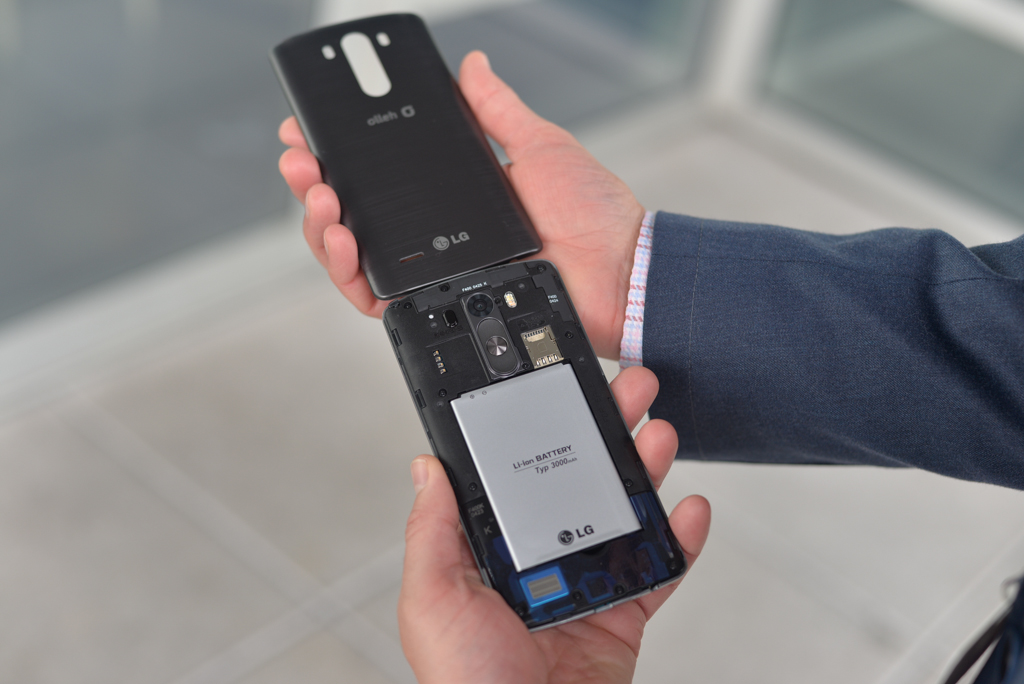
Small changes, like the addition of a removable battery and built-in wireless charging, along with software features like Smart Notice, add up quickly.
Ultimately, the LG G3 is a successful sequel, though it remains to be seen if the higher-resolution display, faster processor, subtly improved camera and removable battery make for a must-have upgrade.
We’ll know more, along with Canadian availability and pricing, in the coming weeks.
MobileSyrup may earn a commission from purchases made via our links, which helps fund the journalism we provide free on our website. These links do not influence our editorial content. Support us here.


